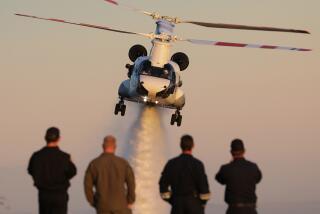Prompted by Crash Fatal to 25 : FAA Proposes Flight Ban Below Grand Canyon Rim
- Share via
WASHINGTON — Prompted by the crash of a helicopter and a sightseeing plane in June, the Federal Aviation Administration on Friday proposed banning flights below the rim of the Grand Canyon.
The special rule would restrict all sightseeing flights over the canyon to the rim level, and require all other aircraft to stay at least 2,000 feet above the rim.
On June 10, the collision of a sightseeing airplane and a helicopter at an altitude of about 6,500 feet killed 25 people. Federal investigators have said that crash occurred several hundred feet below the canyon’s lower north rim.
The Interior Department has recommended banning flights in the narrow, lower third of the canyon and Rep. Tony Coelho (D-Merced) has sponsored legislation in Congress to prohibit flying below the rim.
John Leyden of the FAA said the proposed rule would allow only authorized tour operators to fly within 2,000 feet of the canyon rim. “We will set altitude limitations that would prohibit flying below the rim,” Leyden said.
The FAA has scheduled a public hearing on the proposal for Dec. 16 in Las Vegas. Leyden said the agency wants to move quickly and the regulation could be in effect by March 1.
The rule also would forbid flying closer than 500 feet to obstacles such as rock formations. In addition, it requires tour pilots to monitor specific radio frequencies and report their positions periodically.
The FAA estimates that 90,000 flights--most of them sightseeing trips--made each year over the Grand Canyon are low enough for park visitors below to see or hear. These flights carry 300,000 to 400,000 visitors annually.
There have been 51 aviation accidents in the vicinity of the Grand Canyon since 1975, and 11 of them occurred within the canyon, federal safety investigators said.
More to Read
Sign up for Essential California
The most important California stories and recommendations in your inbox every morning.
You may occasionally receive promotional content from the Los Angeles Times.










